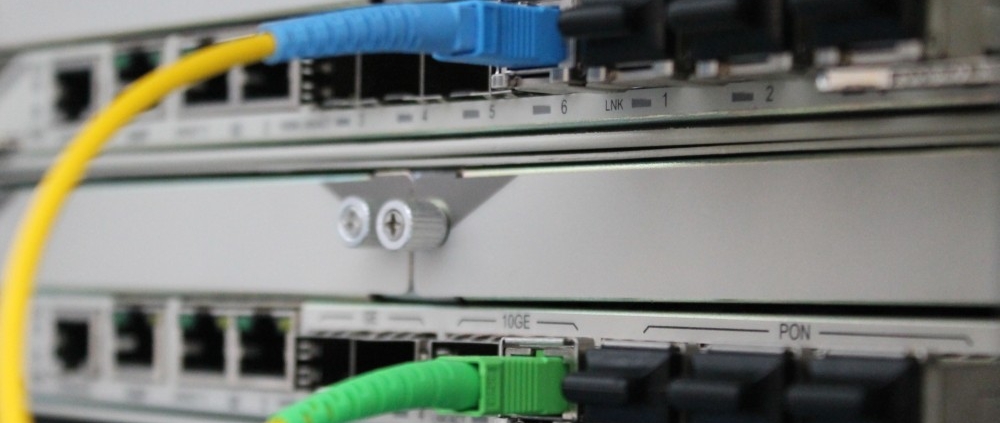GEPON Definition
GEPON (Ethernet Passive Optical Network) is a new type of optical access network technology that uses point-to-multipoint architecture and passive optical fiber transmission to provide a variety of services over Ethernet. It is also called EPON.
GEPON Basic Technology
The concept of the passive optical network (PON) has a long history. It has the characteristics of saving fiber resources and being transparent to network protocols. It plays an increasingly important role in optical access networks. EPON is a new type of optical access network technology, which uses point-to-multipoint structure, passive optical fiber transmission, in the Ethernet to provide a variety of business. After two decades of development, Ethernet technology has almost completely ruled LAN with its simplicity, practicality and low cost, and has proved to be the best carrier for carrying IP data packets. With the increasing proportion of IP services in metro and trunk transmission, Ethernet is gradually penetrating into access, metropolitan areas and even backbone networks through improvements in transmission rates and manageability.
The combination of Ethernet and PON results in an Ethernet Passive Optical Network (EPON). EPON uses PON technology in the physical layer, uses the Ethernet agreement in the link layer, has realized the access of Ethernet by the topological structure of PON. Therefore, it combines the advantages of PON technology and Ethernet technology: low cost; high bandwidth; scalability, flexible and rapid service reorganization; compatibility with existing Ethernet; easy management, etc., is becoming the optical access Top technology in the field of networks.
EPON can realize the integration of voice, data, video and mobile services. The EPON system is mainly composed of EPON OLT (Optical Line Terminal), EPON ONU (Optical Network Unit), EPON ONT (Optical Network Terminal) and ODN (Optical Distribution Network). It is at the access network level of the network and is mainly suitable for optical fiber connection Into.
Active network equipment includes central office rack equipment (OLT) and optical network unit (ONU). The Optical Network Unit (ONU) provides the user with the interface between data, video and telephone networks and PONs. The initial role of the ONU is to receive the optical signal and convert it to the format desired by the user (Ethernet, IP broadcast, telephone, T1 / E1, etc.). OLT devices are connected to the IP core network via optical fibers. The introduction of optical access network, which covers a range of 20km, ensures that the OLT can be upgraded to the traditional metro aggregation node early in the optical access network construction, thereby simplifying the network structure of the access network convergence layer and saving The number of end office. In addition, the features of high capacity, high access bandwidth, high reliability, and multi-service QoS support capabilities of optical access networks also make the evolution of access networks into a unified, converged and highly efficient platform for carrying a platform become a reality.
GEPON History
In November 2000, IEEE set up the 802.3EFM (Ethernet in the First Mile) research group. There are 21 network equipment manufacturers in the industry that initiated the establishment of EFMA to implement the Gb / s Ethernet point-to-multipoint optical transmission solution. GEPON (Gigabit Ethernet PON). EFM standard IEEE802.3ah;
EPON is a new type of broadband access technology that provides comprehensive service access to data, voice, and video over a single optical access system with good economics. The industry generally believes that FTTH is the ultimate solution for broadband access, and EPON will also become a mainstream broadband access technology. Due to the characteristics of the EPON network structure, the special advantages of broadband access, and the natural organic combination with the computer network, the experts in the world all agree that the passive optical network is to realize the “triple play” and solve the information expressway “The last mile” the best transmission medium.
GEPON Technology Principle
GEPON system uses WDM technology to achieve single-fiber bi-directional transmission with uplink 1310nm and downlink 1490nm wavelength data and voice transmission, CATV services using 1550nm wavelength bearer. OLT placed in the central office side, distribution and control channel connections, and real-time monitoring, management and maintenance functions. The ONU is placed on the user side, and the OLT and ONU have connected in a 1: 16/1: 32 mode via a passive optical distribution network.
In order to separate signals from multiple users on the same optical fiber, the following two kinds of multiplexing technologies can be used.
- Downlink data stream using broadcast technology. In EPON, the process of downlink data transmission from OLT to multiple ONUs is sent by data broadcast. The data is broadcast downstream from the OLT to multiple ONUs in the form of variable-length packets. Each packet carries an EPON packet header, uniquely identifying whether the packet is addressed to ONU-1, ONU-2, or ONU-3. It can also be identified as a broadcast packet sent to all ONUs or to a specific ONU group (multicast packet). When the data reaches the ONU, the ONU receives and identifies the packets addressed to it through address matching, and discards the packets sent to other ONUs. After the ONU is registered, a unique LLID is allocated. When the OLT receives the data, it compares the LLID registration list. When the ONU receives data, it only receives frames or broadcast frames that conform to its own LLID.
- Upstream data flow using TDMA technology. The OLT compares the LLID registration list before receiving the data; each ONU sends a data frame in a time slot uniformly allocated by the OLT of the central office; the allocated time slots (by the ranging technology) compensate for the difference in the distances of the ONUs, avoiding the difference between the ONUs The collision between.
GEPON Network Deployment and Application
Under the current large-scale deployment of FTTB networks and the advancement of reorganization of operators’ networks, the network using EPON access technologies has also started to scale-up. Planning for the deployment of a new cell network Implement comprehensive access to cell data and voice services through EPON network construction. According to the location of the network optical line terminal placement, networking generally has the following 3 ways:
- OLT placed in the center room (such as switch room, data room, etc.), which is characterized by large coverage, easy to operate and manage, suitable for early users less or centralized management of the scene.
- Remote center room, its coverage is moderate, easy to operate and manage, both capacity and resources.
- Outdoor machine room or cell room, which is characterized by saving fiber, but management and maintenance difficulties, covering a relatively small, need to solve the power supply problem, generally not recommended in this way.
The choice of the location of the OLT mainly depends on the actual application scenario. It is generally recommended to place the OLT in a central computer lab to facilitate maintenance and management, save costs, and facilitate resource sharing. In the process of network formation, the choice of optical fiber transmission lines needs to consider the influence of optical fiber attenuation. When designing the network structure, it is necessary to ensure that the optical power is within the normal range of transmission and reception.
After the network structure of the OLT and the ONU is laid out, the EPON network should mainly consider the design of the network line. In the design of the optical network, emphasis should be put on the attenuation design requirements of the optical fiber. For the EPON project, the transmission loss of the ODN of the project can be estimated according to the following common engineering data of the optical access network.
ODN attenuation works recommended 10 ~ 26db (usually 22db); single-mode fiber attenuation ≤ 0.34dB / km; fiber jumper, pigtail insertion loss of 0.1 ~ 0.3db; flange insertion loss ≤ 0.4db; 1 : 2 splitter insertion loss of 3db; 1: 4 splitter insertion loss of 6db; 1: 8 splitter insertion loss of 9db; 1: 16 splitter insertion loss of 12db; 1: 32 splitter into the bad Consumption of 15.5db.
- OLT optical power. Received as -1 ~ -24db (1310nm); sent as +2 ~ -3db (1490nm).
- ONU optical power. The reception is -3 ~ -24 (1490nm); the transmission is -1 ~ + 4 (1310nm).
For normal OLT and ONU equipment to receive and transmit optical power, in practical engineering design, it is necessary to ensure that the optical power attenuation value of the network is within the range of the receiving and transmitting optical power of the corresponding equipment.
According to ONU (Optical Network Unit) laying principles, EPON network mode can be divided into FTTH, FTTB, and FTTN.
FTTH
That is, fiber-to-the-home, suitable for users living more dispersed areas and higher bandwidth requirements (such as villas), and developers have the initiative to participate in network construction. In this case, the networking mode generally leads the optical cable from the OLT at the central office to the villa area, places the optical splitter at a relative center in the villa area, and then connects the optical fiber cable to the user’s home through a small number of optical fiber cables or a new type of small number of optical fibers Of ONU, at the same time according to user needs in the user’s home connection switch or hub (HUB) for multiple devices to connect.
FTTB
This method is suitable for a single building, relatively small number of users, bandwidth requirements are not high scenes. The general networking mode is to lead the optical cable from the central office OLT to the optical cable transfer box near the commercial building, place the optical splitter in the optical cable transfer box, and then lead the optical cable from the transfer box to the building. ONU placed in the building handover, through the switch to provide broadband Internet access business users. In this case, the construction needs to choose a reasonable shunt ratio according to the user’s bandwidth requirements and quantity.
FTTN
It is a compromise between bandwidth and investment. FTTN uses the latest digital subscriber line (DSL) technology to meet long-term subscriber bandwidth requirements. FTTN uses long twisted pair cables as much as possible to improve the ADSL Access Multiplexer (DSLAM) node User capacity, thereby reducing the number of nodes, reducing investment and maintenance costs.
EPON network deployment and business implementation
- Internet access. Provide general Internet access, Internet users have enough bandwidth guarantee.
- VoIP. Future-oriented NGNs provide Internet telephony services.
- IPTV. To achieve unicast or multicast video services and set-top box IPTV services.
To meet residential users demands for broadband services differences, early in the project we have to provide users with broadband Internet access and VOIP voice services, at the same time to be carried out later VOIP business and the corresponding value-added data services ready. For the built network will be able to provide users with enough bandwidth to achieve high-quality data access services, VOIP services, IPTV streaming media services. At the same time the network should have good expansion and upgrading capabilities, in the future can effectively support the triple play business needs.





